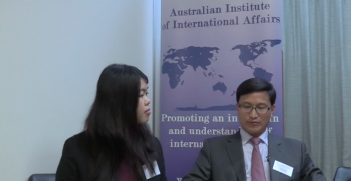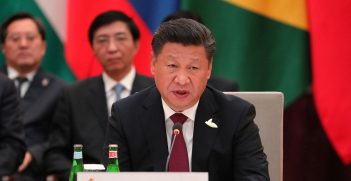Reading Room: The Age of Connectivity - ASEM and Beyond

China’s Belt and Road Initiative (BRI), which aims to revive the ancient trade routes that once connected Europe with Asia, is credited as the largest-ever infrastructure project to be attempted in human history and marks a huge advancement in globalisation.
The sheer scale of such a project, as it draws together a vast spectrum of nations from the farthest corners of Europe to the Pacific edge of Asia, warrants a robust discussion on policy implementation and transparency among the nations involved. This is, of course, the view that lies at the heart of the Asia-Europe Meeting (ASEM), a forum of 53 nations spanning two continents, many of which will be directly affected by the BRI.
The Age of Connectivity offers an insightful analysis into the vision and progress of ASEM that serves to determine the guiding principle for the future of intercontinental connectivity. Through a collection of essays, it provides the framework and highlights the benefits of multilateral cooperation among ASEM member states.
It prescribes sensible processes such as continuous policy dialogue and sub-regional approaches to integration that are sensitive to the unique complexities of individual nations, whose own abilities to meet goals and requirements may diverge.
Furthermore, it identifies levels of both optimism and caution in discussing areas of collaboration between ASEM nations. On the topic of disaster management, the book includes two perspectives. While Burmese academic Myint Thu argues that connectivity through ASEM allows for better public awareness and preparedness through the networking of ideas, retired Bangladeshi Military General Munir Muniruzzaman contends that developing countries lack the capacity for implementing policy ideas prescribed by developed nations, except for local risk-management and disaster-relief measures.
The book also examines how connectivity through ASEM encourages a culture of democratic processes within member states. As a think tank that operates in the interest of many different parties, equal representation and consensus is a prerequisite for its legitimacy and relevance. Michael Reiterer remarks that this results in “quiet diplomacy” between nations, allowing for better dialogue in conflict-mediation and resolution.
Additionally, the book also focuses on the spread of democratic values through ASEM and assesses whether they would impact the domestic politics of member nations. Many of these nations are found to be lacking on the democratic quotient scale, with dubious political and legal institutions in place. Jürgen Rüland explains, however, that the flow of democratic ideas may fail to produce an “even-handed ideation exchange” due to a significant divergence of understandings between the occident and the orient and the historical distrust of Western norms among Asian nations.
Beatrice Gorawantchy, Megha Sarmah, Patrick Rueppel (Eds) The Age Of Connectivity – ASEM and Beyond Singapore: Konrad-Adenauer-Stiftung 2016.
Nicholas Taylor is currently an intern at the AIIA National Office, he completed a Bachelor of Arts at Murdoch University.





